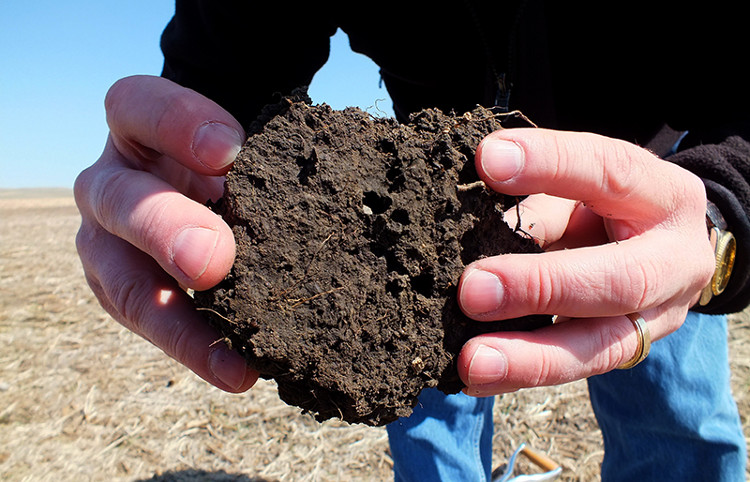Use land to reduce greenhouse gas emissions
Soil has a few important characteristics to be noticed: Ability to sequester carbon, reduce greenhouse gas emissions. Scientists are studying this benefit to find solutions to climate change .
There are about 830 billion tons of carbon in the air. Every year, people waste about 10 billion tons more. The soil can contain 4,800 billion tons, 6 times the air.

Soil is capable of sequestering carbon, reducing greenhouse gas emissions.(Photo: Organicconsumers).
Johannes Lehmann of Cornell University - co-author of the study - said: " We can significantly reduce the amount of carbon in the atmosphere by using land, using land management technology to reduce greenhouse gases." .
It is important to strengthen the nitrogen cycle in the soil, ensuring that nitrogen - essential for plant growth - is balanced. This not only helps the soil increase its ability to sequester carbon, reduce the greenhouse effect, but also increases soil fertility, increases crop yields and biodiversity, reduces water pollution and erosion and protects crops. from the effects of climate change.
Specific activities for land management are: Maintaining land by maintaining forests or pastures, reducing farmland, increasing livestock grazing, applying biochar, planting cover crops and vegetation for barren productive land.
To promote effective global warming, land management requires a combination of knowledge in the fields of politics, economy, society and culture.
- Biofuels increase greenhouse gas emissions
- The grass helps reduce greenhouse gases
- Study the phenomenon of
- Greenhouse gas emissions hit a new record
- Indonesia planted millions of hectares of forests to reduce emissions
- Greenhouse gas: The richer the more you have to reduce
- You will not be able to achieve the greenhouse gas emission reduction target
- Dairy farming contributes significantly to greenhouse gas emissions
- Pollutant emissions increased record high
- Reduce the greenhouse effect by white
- Reduce 70% of greenhouse gases with seaweed
- The amount of greenhouse gas emissions reaches a record level
 Is the magnetic North Pole shift dangerous to humanity?
Is the magnetic North Pole shift dangerous to humanity? Washington legalizes the recycling of human bodies into fertilizer
Washington legalizes the recycling of human bodies into fertilizer Lightning stone - the mysterious guest
Lightning stone - the mysterious guest Stunned by the mysterious sunset, strange appearance
Stunned by the mysterious sunset, strange appearance